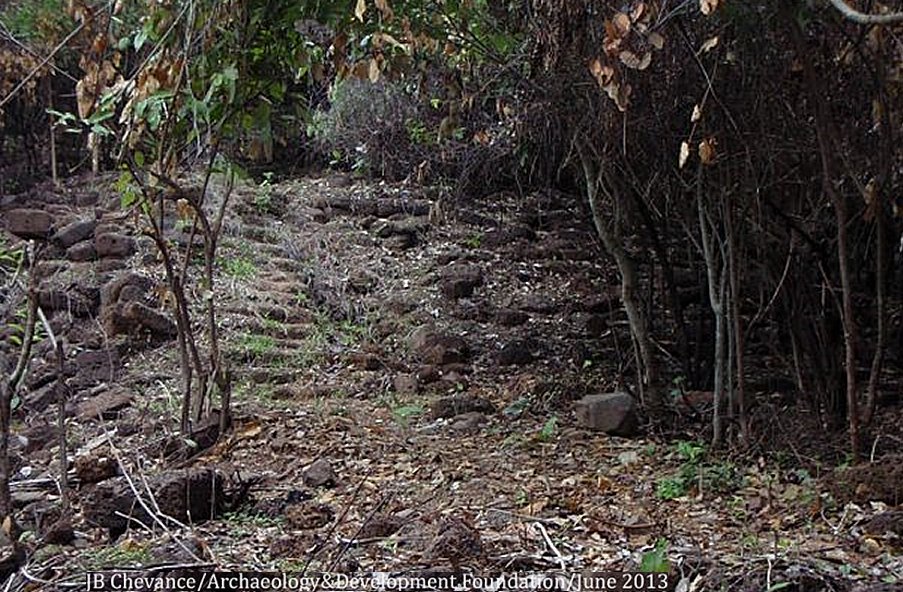AncientPages.com - A team of international archaeologists has just begun exploring a mysterious ancient staircase in the Phnom Kulen in Siem Reap province, near the Angkor World Heritage Site in northwestern Cambodia.
Phnom Kulen (its name means "mountain of the lychees") is a mountain range stretching over 12.8 kilometers along the Angkor plain. The 487-meter ascent to sacred Phnom Kulen in Siem Reap province, north of Angkor Wat, is steep and rocky.
Phnom Kulen has a symbolic importance and it is venerated by Cambodians as it is the site where the Khmer empire originated.
At some time between the ninth and 13th centuries, a powerful leader decided to build a more comfortable ascending path to the sacred site. The place where the staircase was built, was carefully chosen by avoiding cliffs and rocks.
Unknown ancient builders constructed of 550-meter staircase made of red stone known as ‘laterite ‘originating from the mountain itself. The laterite has been widely used as construction material, for example, in Konkan Region of Maharashtra, India, too.
This mysterious, 15-meter-wide straircase, known locally as Pleu Cere, of which precise date of construction is for now unknown, survived many generations and were undoubtedly often used by pilgrims.
Last century archaeological survey in the area of Phnom Kulen, identified more than 30 different temple ruins, grids of dykes, roads and canals hidden under sediment and vegetation over the past 12 centuries.
Was the staircase constructed in the immediate aftermath of Jayavarman II’s 802 CE declaration of independence from the former empire of Java, when the king assembled a new mountaintop city of Mahendraparvata that is widely considered to be the start of the Khmer Empire?
Or was it constructed a few centuries later, after the capital had moved to Angkor Thom on the plains in the late 12th century, suggesting the mountain remained a regular path of pilgrimage to the sculpted caves and carved riverbeds locals continued to build?
“The problem is to know when it was built, because there are no carvings, no other remains,” said French archaeologist Jean-Baptiste Chevance, program director for the Archaeology & Development Foundation’s (ADF) Phnom Kulen program.
The staircase is interposed with four larger, flat constructions that appear to have functioned as rest areas with access to spring water, but there are no carvings or other remains that could shed some light on history of the staircase.
Now, archaeologists hope to use of Lidar and ground surveys in their exploration of the staircase and the sacred area as well.
AncientPages.com







